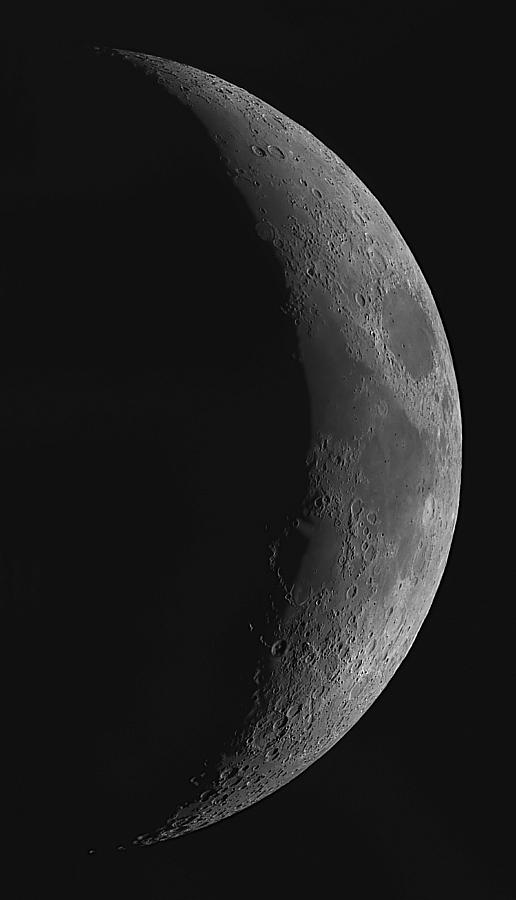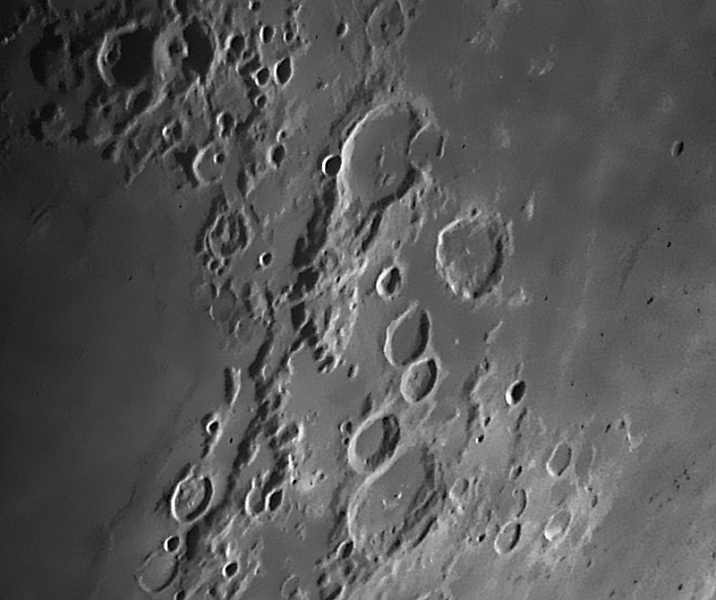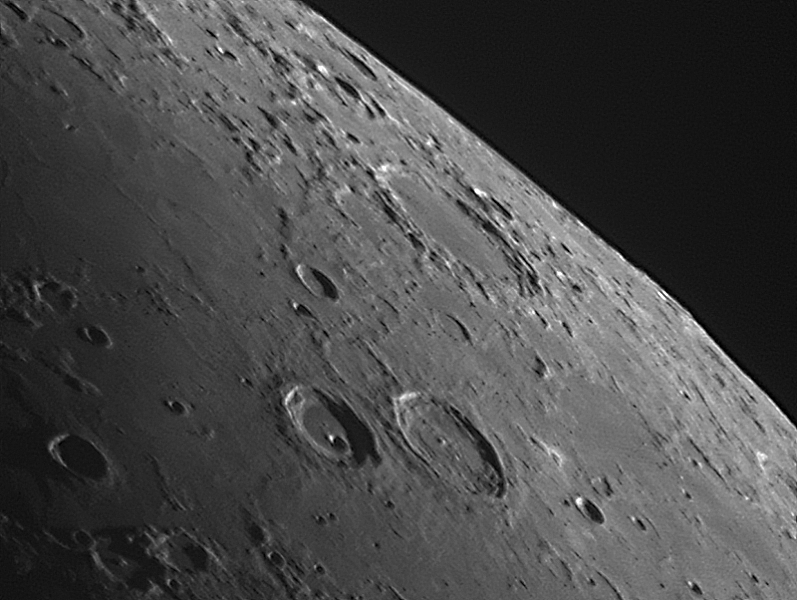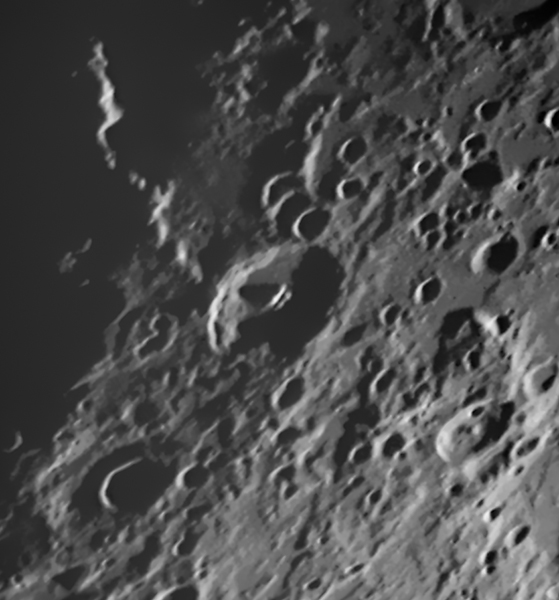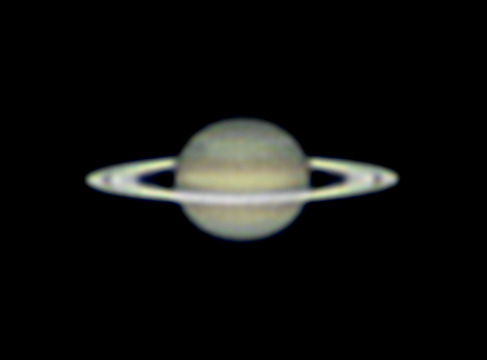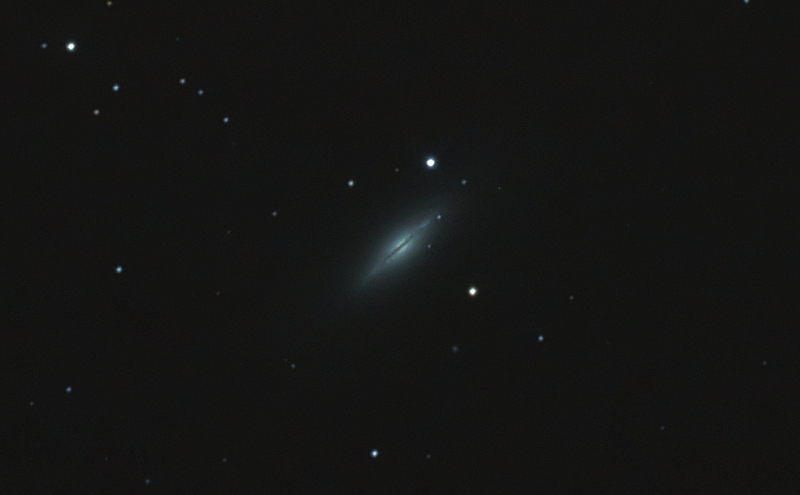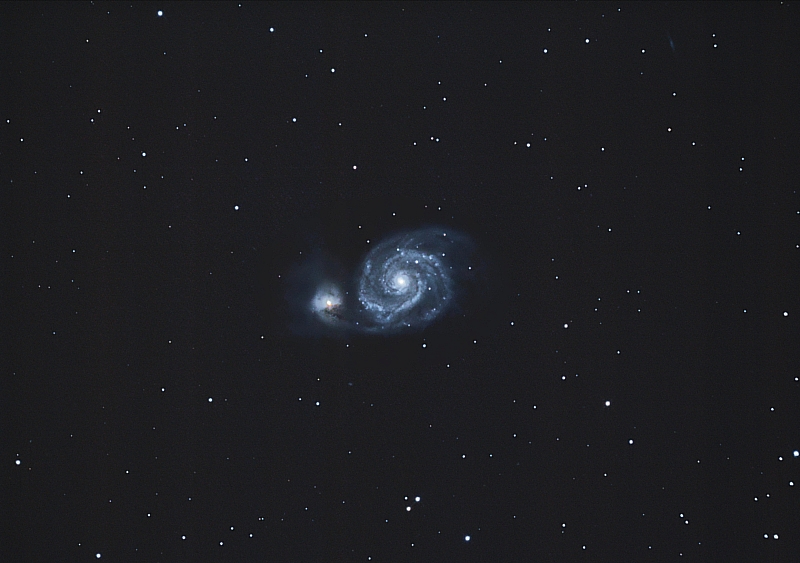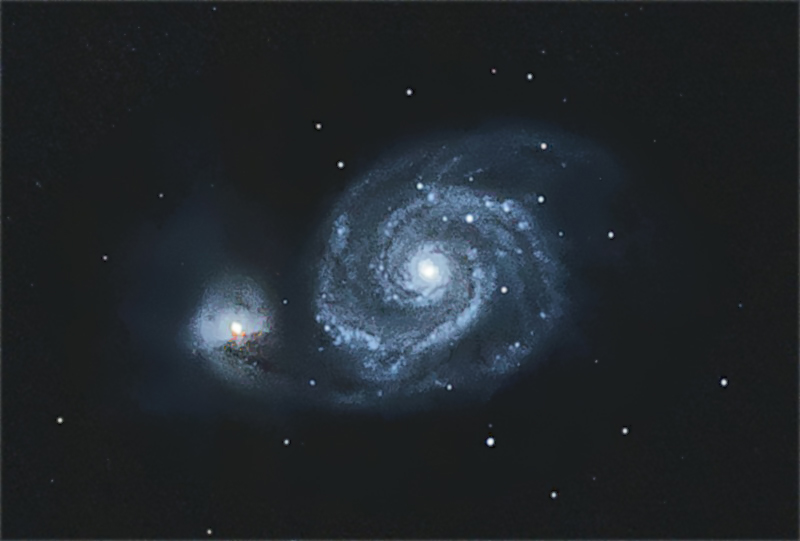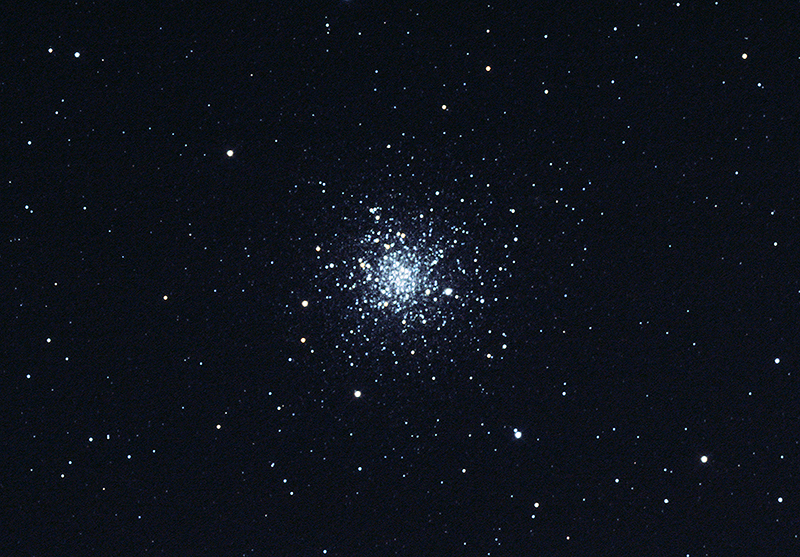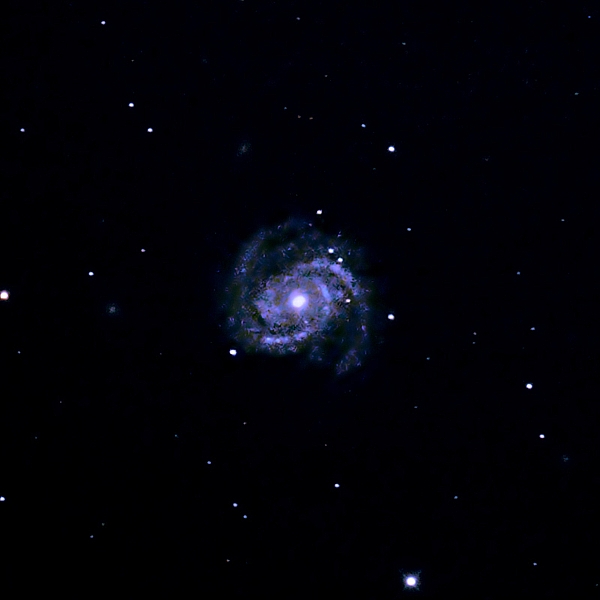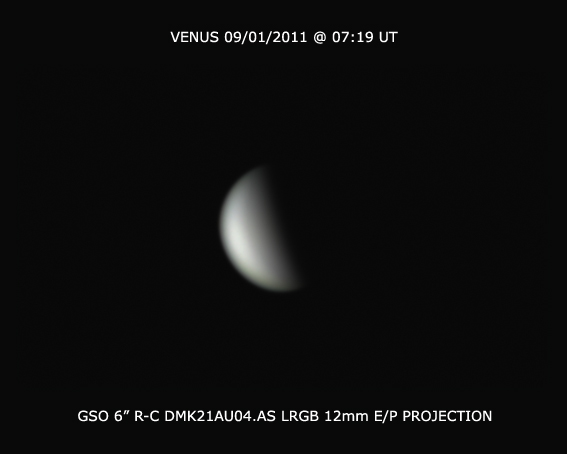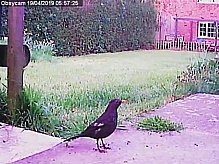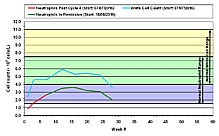As I've said before, observing the early phases of the Moon from my obsy is a bit of a lottery - due to the restricted western view the only way to get the scope pointing at the thin waxing crescent is when the Moon's high in the western sky. This time around it was late in the afternoon... sunny... hot... not the best conditions for this sort of thing.
I'd invited some friends around to have a go with the scope so I'd got set up with an hour to spare. While waiting for them to arrive I grabbed some video data for another lunar mosaic. Processing was difficult but eventually a passable result was achieved:
The Moon.
11-pane mosaic created with PSCS3.
Each pane 100/2000 frames stacked with K3CCDTools3.
DMK mono CCD camera on the 6" R-C, unguided.
When the guests arrived we did some visual observing and also did some lunar exploring using the DMK for looking and the laptop for display. A few interesting bits were recorded, here are the results:
(mouseover the pics for the annotated versions):
Rheita (42 miles dia.), Stiborius A (19 miles dia.), Metius (53 miles dia.),
Watt (40 miles dia.), Steinheil (41 miles dia.), Fabricius (47 miles dia.),
Vallis Rheita (303 x 18 miles)
Romer (24 miles dia.), Chacornac (31 miles dia.), Newcomb (24 miles dia.),
Macrobius (39 miles dia.), Dorsa Aldovandi (73 miles long)
Isidorus (25 miles dia.), Capella (30 miles dia.), Gutenberg (45 miles dia.),
Gutenberg D (12 miles dia.), Goclenius (33 miles dia.), Magelhaens (25 miles dia.),
Magelhaens A (19 miles dia.), Bellot (10 miles dia.), Colombo (46 miles dia.),
Colombo A (25 miles dia.)
Endymion (76 miles dia.), Keldysh (20 miles dia.), Hercules (42 miles dia.),
Atlas (53 miles dia.), Atlas A (13 miles dia.), Burg (24 miles dia.),
De La Rue (82 miles dia.)
Piccolomini (53 miles dia.), Neander (30 miles dia.), Stiborius (27 miles dia.),
Rupes Altai (short section) (291 miles long)
Eventually the Moon dropped out of our field of view so we went in for a brew and waited a few hours for darkness to reveal some other targets.

